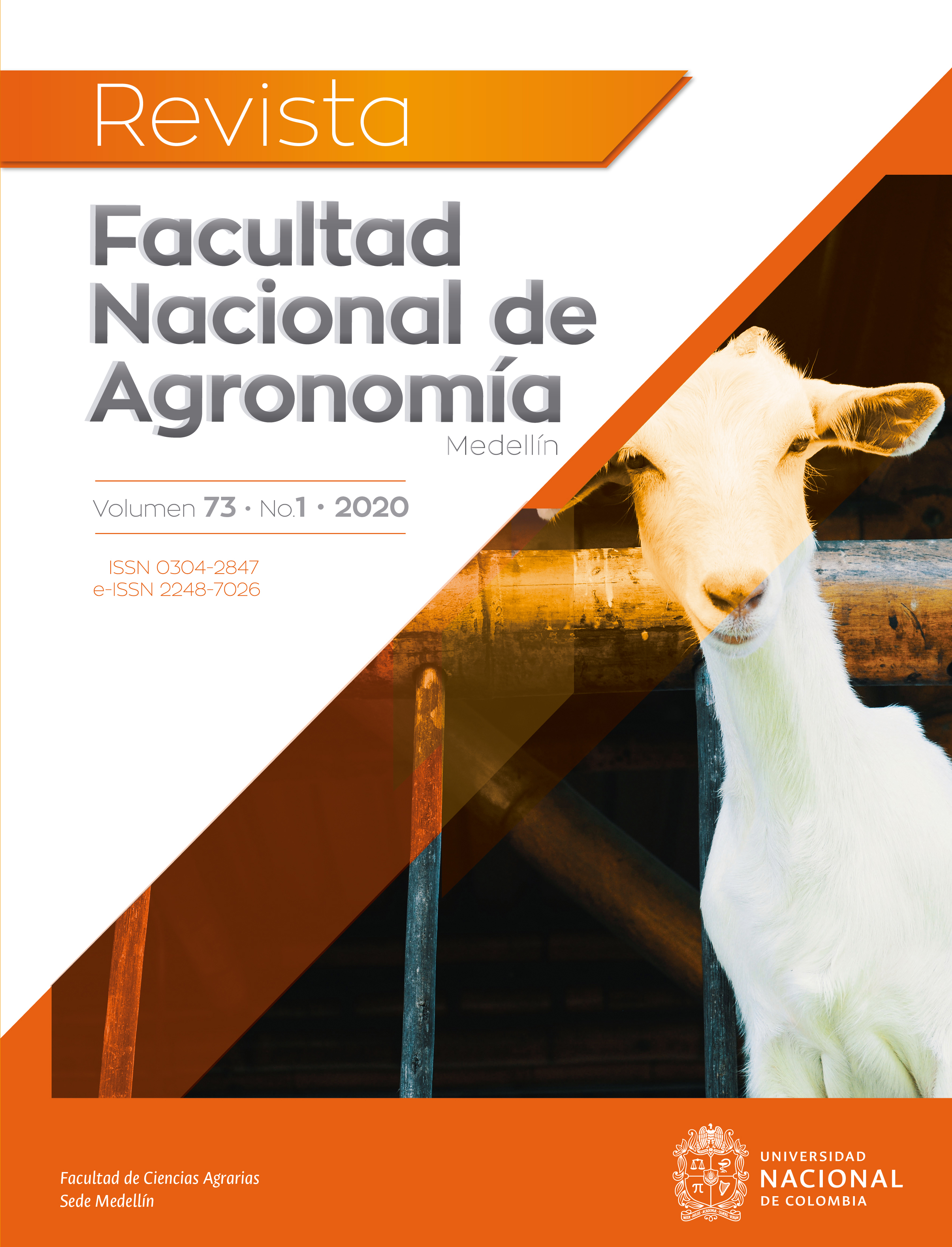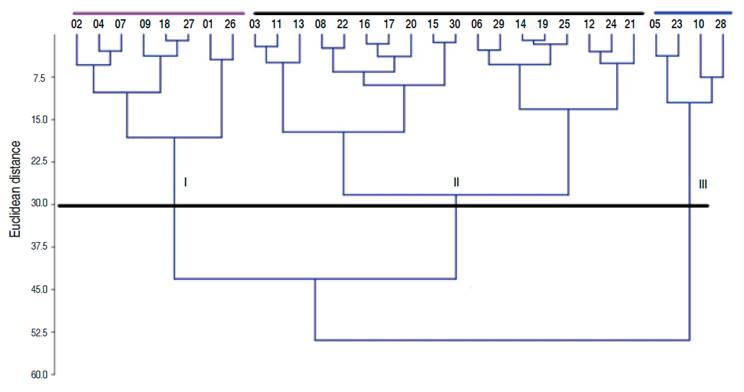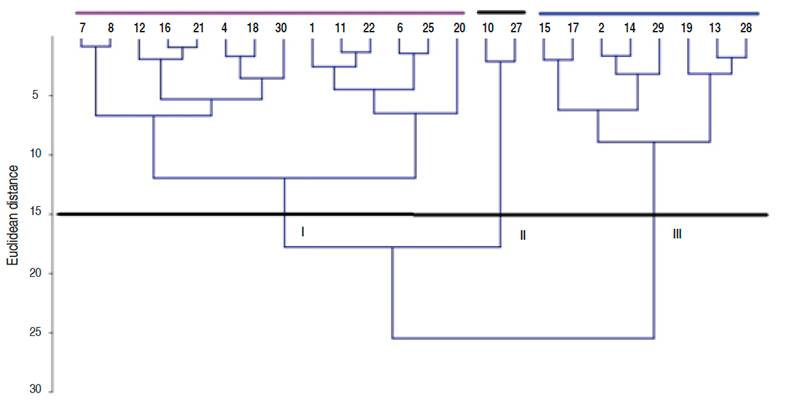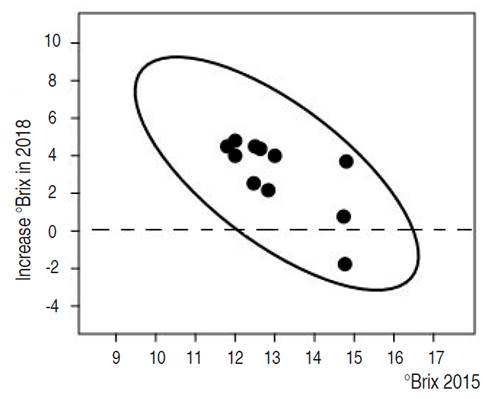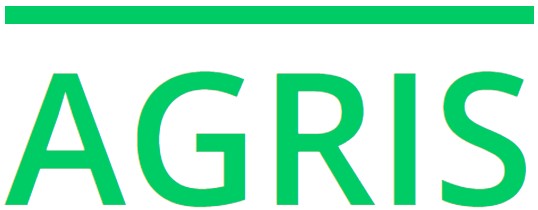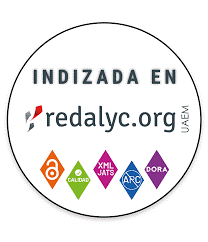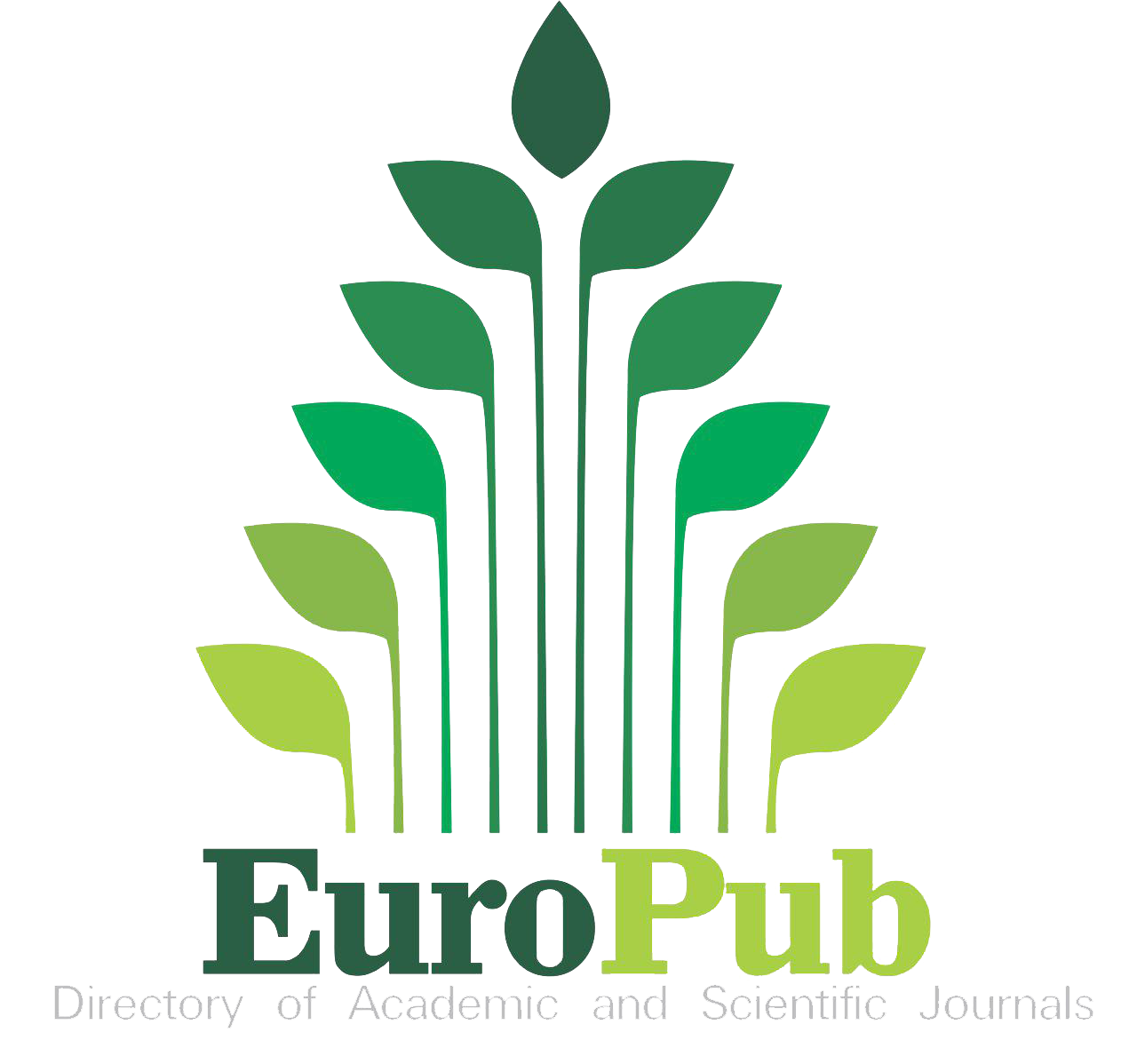Morphological characterization of the red dragon fruit - Selenicereus undatus (Haw.) D.R. Hunt – under growing conditions in the municipality of San Jerónimo (Antioquia, Colombia)
Caracterización morfológica de pitaya roja – Selenicereus undatus (Haw.) D.R. Hunt - en condiciones de cultivo en el municipio de San Jerónimo (Antioquia, Colombia)
DOI:
https://doi.org/10.15446/rfnam.v73n1.77735Keywords:
Cactaceae, Characterization, Diversity, Promising species, Selenicereus undatus (en)Cactaceae, Caracterización, Diversidad, Especie promisoria, Selenicereus undatus (es)
The red dragon fruit Selenicereus undatus is a native fruit from the Americas. Its growing appeal in the international market as an exotic fruit highlights the relevance of the crop for the local economies. In Colombia, the high diversity within the genus and species makes it difficult to have reliable materials for propagation as cultivars. This agronomic challenge requires more studies of the distribution and real diversity within the genus Selenicereus sp. Due to the information aforementioned, the fruit is harvested in small localities as an extraction production system. This project aimed to morphologically characterize the working collection of red dragon fruit under growing conditions in the Municipality of San Jerónimo. It contained 30 accessions from the departments of Antioquia, Córdoba, and Valle del Cauca. Twenty-one characters of cladode, flower, and fruit were quantified to assess the diversity, and a restricted cluster analysis was performed to understand the morphological richness of the materials. As a result, it was observed differences in terms of stems, such as distance between areolas and width of cladode. This was also observed in flowers, in which their total length, the width of petals, the presence of trichomes, the color of calyx and petals, and the color of the stigma were different. Also, differences were recorded in the fruit. Characteristics such as weight and color of its skin were assessed, resulting in fruit size medium to small. Regarding other properties, total soluble solids varied between 11.2 to 15.6 °Brix. 55% of the fruits have measurements that fit market requirements. Finally, three accessions match the requirements of weight and °Brix, to be used as possible genotypes by commercial growers; however, studies about agronomic management strategies that favor an increase in fruit weight must be done.
La pitaya roja Selenicereus undatus, es una planta originaria de América, con potencial como fruta exótica, ya que es apreciada en el mercado internacional. En Colombia crece naturalmente en zonas cálidas y no se tiene claridad sobre las especies que existen, ya que este género presenta mucha hibridación intra e interespecífica, hace falta más estudios en este campo además de verificar los genotipos en otras zonas donde hay reportes de la especie. Su producción se hace de forma extractiva o en pequeñas áreas de cultivo. Este trabajo tuvo como objetivo la caracterización morfológica de la colección de trabajo de pitaya roja en condiciones de cultivo en el Municipio de San Jerónimo. El cultivo corresponde a 30 accesiones de los departamentos de Antioquia, Córdoba y el Valle del Cauca. Para ello, se evaluaron 21 caracteres de cladodio, flor y fruto. Se realizó un análisis de cluster restringido, donde se encontró que las accesiones difirieron en la distancia entre areolas y ancho de cladodio; en longitud total de las flores, ancho de pétalos, presencia de tricomas, color de cáliz y de pétalos, color y longitud del estigma; en peso del fruto y color de la cáscara. Los frutos presentan un tamaño mediano a pequeño. El contenido de solidos solubles totales varió entre 11.2 a 15.6 °Brix, siendo el 55% de los frutos los que presentaron los valores exigidos por el mercado. Por las variables peso y °Brix, tres accesiones cumplen con los requisitos para ser sembradas comercialmente, sin embargo es necesario evaluar una modificación en las labores de cultivo para tratar de aumentar el tamaño de los frutos.
Recibido: 7 de febrero de 2019; Aceptado: 30 de julio de 2019
RESUMEN
The red dragon fruit Selenicereus undatus is a native fruit from the Americas. Its growing appeal in the international market as an exotic fruit highlights the relevance of the crop for the local economies. In Colombia, the high diversity within the genus and species makes it difficult to have reliable materials for propagation as cultivars. This agronomic challenge requires more studies of the distribution and real diversity within the genus Selenicereus sp. Due to the information aforementioned, the fruit is harvested in small localities as an extraction production system. This project aimed to morphologically characterize the working collection of red dragon fruit under growing conditions in the Municipality of San Jerónimo. It contained 30 accessions from the departments of Antioquia, Córdoba, and Valle del Cauca. Twenty-one characters of cladode, flower, and fruit were quantified to assess the diversity, and a restricted cluster analysis was performed to understand the morphological richness of the materials. As a result, it was observed differences in terms of stems, such as distance between areolas and width of cladode. This was also observed in flowers, in which their total length, the width of petals, the presence of trichomes, the color of calyx and petals, and the color of the stigma were different. Also, differences were recorded in the fruit. Characteristics such as weight and color of its skin were assessed, resulting in fruit size medium to small. Regarding other properties, total soluble solids varied between 11.2 to 15.6 °Brix. 55% of the fruits have measurements that fit market requirements. Finally, three accessions match the requirements of weight and °Brix, to be used as possible genotypes by commercial growers; however, studies about agronomic management strategies that favor an increase in fruit weight must be done.
Keywords:
Cactaceae, Characterization, Diversity, Promising species, Selenicereus undatus.ABSTRACT
La pitaya roja Selenicereus undatus, es una planta originaria de América, con potencial como fruta exótica, ya que es apreciada en el mercado internacional. En Colombia crece naturalmente en zonas cálidas y no se tiene claridad sobre las especies que existen, ya que este género presenta mucha hibridación intra e interespecífica, hace falta más estudios en este campo además de verificar los genotipos en otras zonas donde hay reportes de la especie. Su producción se hace de forma extractiva o en pequeñas áreas de cultivo. Este trabajo tuvo como objetivo la caracterización morfológica de la colección de trabajo de pitaya roja en condiciones de cultivo en el Municipio de San Jerónimo. El cultivo corresponde a 30 accesiones de los departamentos de Antioquia, Córdoba y el Valle del Cauca. Para ello, se evaluaron 21 caracteres de cladodio, flor y fruto. Se realizó un análisis de cluster restringido, donde se encontró que las accesiones difirieron en la distancia entre areolas y ancho de cladodio; en longitud total de las flores, ancho de pétalos, presencia de tricomas, color de cáliz y de pétalos, color y longitud del estigma; en peso del fruto y color de la cáscara. Los frutos presentan un tamaño mediano a pequeño. El contenido de solidos solubles totales varió entre 11.2 a 15.6 °Brix, siendo el 55% de los frutos los que presentaron los valores exigidos por el mercado. Por las variables peso y °Brix, tres accesiones cumplen con los requisitos para ser sembradas comercialmente, sin embargo es necesario evaluar una modificación en las labores de cultivo para tratar de aumentar el tamaño de los frutos.
Palabras clave:
Cactaceae, Caracterización, Diversidad, Especie promisoria, Selenicereus undatus.The genus Hylocereus belongs to the Cactaceae family, and recently was included in Selenicereus group (Korotkova et al., 2017); however, other authors suggest that it is important to evaluate morphological, ecological, and molecular traits to support the group position (Ruiz-Domínguez et al., 2019). In Selenicereus, there are native hemiepiphyte species from the American tropical regions considered valuable for their fruits. Among them, S. undatus (Haworth) Britton & Rose, and S. megalanthus (K. Schum. ex Vaupel) Moran are the most economically important and widely distributed species worldwide. When comparing both yellow and the red dragon fruit, the red one shows more favorable characteristics to be grown. The absence of fruit thorns and its intense red color make it very attractive and ornamental, besides its potential industrialization due to the high content of betalains pigments, considered an alternative to the use of artificial colors in food. In addition, it has been observed that these pigments have antioxidant properties (Esquivel and Araya Quesada, 2012). S. undatus is mainly known with the common names of dragon fruit, red pitaya, or red pitahaya (Esquivel, 2004).
Worldwide, it is considered that the biological diversity of the Selenicereus genus has been insufficiently studied. In grower countries, it is crucial to identify species and varieties because there are serious problems related to the lack of uniformity in many fruits characteristics, such as sweetness, size, shape, color, and bracts number. It is also important to determine their performance in handling and shelf life due to the morphological and genetic heterogeneity (Castillo-Martínez, 2006; Tel-Zur et al., 2010). This heterogeneity makes it difficult to increase the quality standards for the exportation market (Castillo-Martínez, 2006).
Nowadays, it is not easy to separate species and varieties of the dragon fruit due to the high intra and interspecific hybridization, which has been the cause of some taxonomical confusion (Tel-Zur et al., 2004).
In Nicaragua in 1990, some varieties of red dragon fruit were defined by Barbeau, and four years later, some genotypes were selected, becoming the most cultivated in the country. Several characterization studies were carried out, in which significant differences in the cladodes and fruits (color, shape, size, skin thickness) and the number of bracts were found (Maltez, 1994). In both Nicaragua and Mexico, the studied genotypes were mainly originated from family gardens. The red or purple dragon fruit, growing in Nicaragua, Costa Rica, and Guatemala, were identified as S. costaricensis and S. polyrhizus (Esquivel and Araya Quesada, 2012), but today are known as S. monacanthus (Tropicos, 2018).
In Mexico, 21 genotypes were evaluated and described using 47 characteristics. The analyzes allowed recognizing several groups of dragon fruits. The differences were related to cladodes characteristics (size of the concave angle, the height of the angle vertex, the height of the ripple, and the number of columns and lengths), and in flower (number, and length of the internal perianth segments) (Grimaldo-Juárez et al., 2007). A second study carried out in the same country, evaluated quantitative variables, finding that genotypes were different by their reproductive structure characteristics (Castillo-Martínez et al., 2005).
Similarly, in Taiwan, the morphological differences of four Selenicereus spp. clones were evaluated, showing variation in cladodes length and width, the distance of areolas, number, and length of spines, and the edge of the cladode. In the fruit characteristics, variations in shape and skin color, number of bracts, the width of the middle part bracts, length of the apex bract, the shape of the apical cavity, and fIesh color were found (Tran and Yen, 2014).
In Colombia, the red dragon fruit (S. undatus and Selenicereus spp.) grow wild, mainly in the bs-T life zone in the Atlantic Coast, Tolima, and Antioquia (Mejía et al., 2013); although it is also possible to find it in other regions. The only known cultivation of S. undatus is in the municipality of Restrepo - Valle del Cauca, in the working collection of the Politécnico Colombiano Jaime Isaza Cadavid in San Jerónimo - Antioquia.
The accessions present in San Jerónimo were evaluated in situ and then were taken to the collection field, finding that the red dragon fruit had a solid soluble content desirable to the market, even though its size was small (Mejia et al., 2013).
The objective of this research was to make the morphological characterization and evaluate the fruit production of the red dragon fruit (S. undatus) accessions in the working collection in the municipality of San Jerónimo (Antioquia). This working collection was previously evaluated by Mejía et al. (2013) in some agronomic characteristics but not in fruit production, which is important to identify the accessions that have the desired market characteristics.
MATERIALS AND METHODS
Location
The working collection formed by 30 accessions was established in an experimental field in the Research Station "Jhon Jairo González", of the Politécnico Colombiano Jaime Isaza Cadavid located in the municipality of San Jerónimo (Antioquia - Colombia) (6°26'37.57"N, 75°44'04.93"W, at 648 m.a.s.l.). The farm is located in the tropical dry forest (bs-T).
Characterization methodology
The descriptor used for vegetative characters was proposed by González Espino and Alvarado Ruíz (2004) and modified by Mejía et al. (2013). The flower characters were evaluated, according to Borja (2012). Additionally, characters related to production were also included. Twenty-one characters were evaluated: eight for fIowers, seven for fruits, and six for cladodes. The cladodes characterization was made between February and March (2015). The characterization of fIowers and fruits was made as they were coming out, between April and October of the same year. Every character was measure in three individuals per accession; five measurements were taken by plant, using the average value for the statistical analysis. Records of two fruit variables were taken in 2018 in order to evaluate the stability of market characteristics: weight and °Brix. These variables were compared with the results of 2015.
For each part of the plant, a cluster analysis was done separately because not all accessions formed reproductive structures. Thus, the description of the cladodes was made with 30 accessions, for fIowers with 24 accessions, and for fruits with 27 accessions. The statistical procedure was initiated by a correlation between the variables to eliminate those that, in the researchers' opinion, could be measuring the same characteristics. The final list of characters included in the cluster analysis is recorded in Table 1.
Table 1: Descriptors of the red dragon fruit (Selenicereus undatus) to evaluate the accessions of the working collection "Jhon Jairo González"
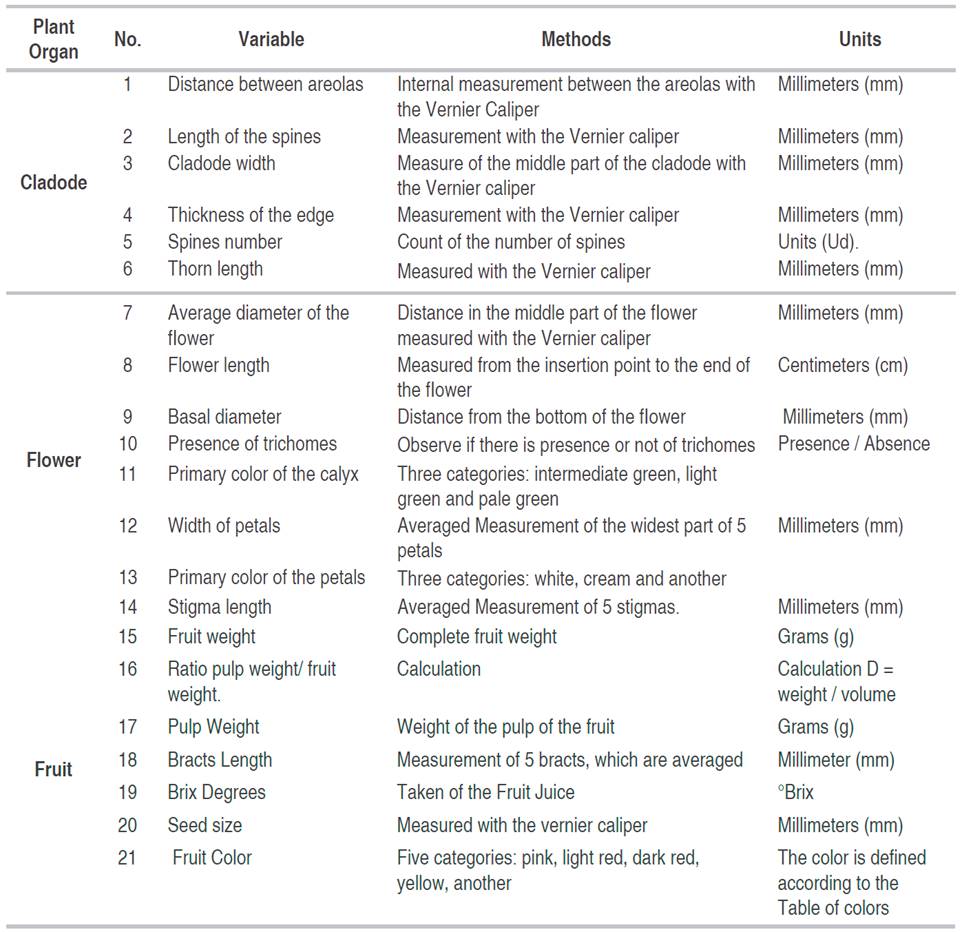
It was used the restricted Ward method, of minimum variance within the conformed groups, in which the Euclidean distance is used. The PAST 3.0 program was used to perform this analysis. Subsequently, the groups formed were compared with mean and standard deviations to establish those variables that had greater weight in the group separation.
RESULTS AND DISCUSSION
Cladodes
The cloning analysis of the cladodes had 64% of explanation, with a Euclidean distance of 30 separated into three distinct groups (Figure 1). The first formed by eight individuals; the second one by 18 individuals, being the largest group; and the third one formed by four individuals. The variables infIuencing the group separation were separated between the areolas and the width of the cladodes. The Group III presented a medium distance among areola, greater than the other two groups (47.8 mm), with 30.3 and 32.3 mm, respectively (Table 2). Group I presented accessions with smaller cladode width than groups II and III. The other characteristics were similar among the groups.
Figure 1: Cladodes dendrogram of the Selenicereus undatus working collection.
Table 2: Difference among the groups of Dragon fruits accessions, according to the cladodes, fIowers and fruits characteristics.
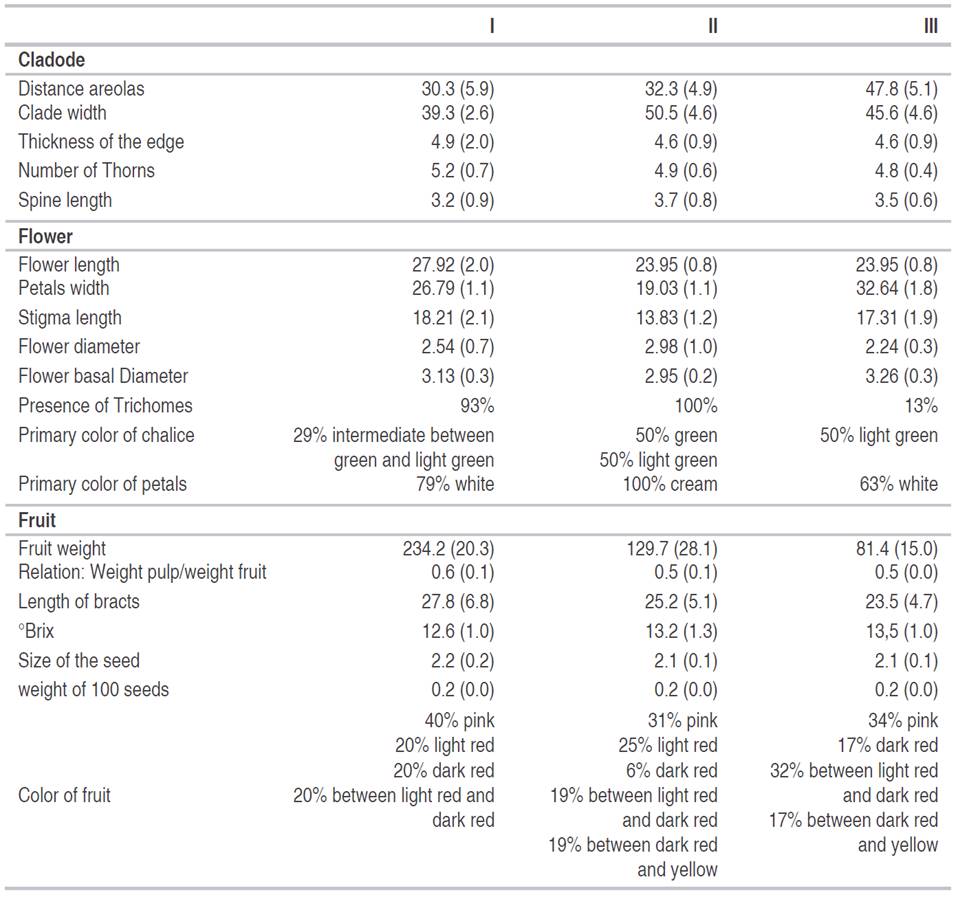
In Group III, the distance between areolas is similar to the reported in accessions from Mexico, whose distance was from 35 to 50 mm (Castillo-Martínez et al., 2005). The cladode width of the accessions from groups II and III was similar to the one found by Tran and Yen (2014), who reported values between 42 and 54.3 mm, and Castillo-Martínez et al. (2005) who recorded widths from 48 to 60 mm.
The spine length values correspond to those of Castillo-Martínez et al. (2005). Tran and Yen (2014) reported, from 3.7 to 4.4 mm, which match only with the group II but differs from Cálix de Dios (2005), who reported values higher than 5 to 6 mm.
The number of spines per areola (4.8 to 5.2) found in this study is higher than the recorded in other studies, as in Mexico from 3 to 4.7 (Castillo-Martínez et al., 2005), and in Taiwan from 2.5 to 4.5 mm (Tran and Yen, 2014).
Flowers
The fIowers cluster analysis (Figure 2) had 58% of explanation and showed three well-differentiated groups at a Euclidean distance of 15, the first group is formed by 14 individuals, the second is formed by two individuals, and the third is formed by eight individuals. The fIowers of group II were smaller than those of groups I and III (Table 2), being that they showed lower values in the length of the fIower, petals width, and stigma length. The other two groups did not differ in these characteristics.
Figure 2: Flower dendrogram of the Selenicereus undatus working collection.
For the calyx color, in group I, 29% of the accessions had a green color, and 29% an intermediate color between green and light green. For group II, 50% of the accessions presented light green, and the 50% rested another color. For group III, 50% of the accessions were light green and 37.5% had a green color.
For the color of the petals, in groups I and III, the white color predominated (79% and 63%, respectively), coinciding with that reported by Tran and Yen (2014); however, the two accessions of the group II were cream color.
The accessions of groups I and III had the length of fIowers similar to those registered in Mexico by Castillo-Martínez et al. (2005), but smaller than those recorded by Cálix de Dios (2005), who describes fIowers from 30 to 37 cm in length. Tran and Yen (2014) had fIowers between 28.6 and 34.1 cm. These results confirmed that the accessions of group II of the San Jerónimo collection have smaller fIowers than those of the other studies.
Fruit
The cluster analysis of the fruit had 86% of explanation at a Euclidean distance of 100 separated three well-differentiated groups (Figure 3). The first formed by five individuals, the second group formed by 16 individuals, and the third was formed by six individuals. The variable that separated the groups corresponds to the fruit weight (Table 2), where the individuals of group I (18.5% of the accessions) presented the heaviest fruits between 232 and 262 g. Those of group II (59% of the accessions) presented fruits between 105 and 172 g, and those of group III (22% of the accessions) presented small fruits between 57 and 96 g. There were no differences in the other variables. The CODEX STAN 237 establishes nine categories (caliber) for the commercialization of the red/white dragon fruit (fruits from 110 g to greater than 701 g) (FAO, 2003). In this study, the fruits of group I correspond to fruits of C caliber (between 201 and 250 g) and D caliber (between 251 and 300 g), the fruits of group II correspond to fruits A caliber (between 110 and 150 g) and B (between 151 and 200 g). The fruits of group III did not reach weights accepted for commercialization. Therefore, it is confirmed that the fruits of the collection correspond to the small and medium categories.
Figure 3: Fruits dendrogram of the Selenicereus undatus working collection.
The content of total soluble solids of the fruits, measured through the °Brix, is a measure of quality (Kleinhenz and Bumgarner, 2013). According to this characteristic, all accessions of the working collection are similar (Table 2). However, when comparing the accessions that produced fruits in 2015 with those that produced fruits in 2018, it was observed that most of the accessions increased the total soluble solids content (Figure 4). The °Brix can be affected by a set of factors, as genetic, climatic, soil, management, among others (Kleinhenz and Bumgarner, 2013). It is necessary to follow the climatic and management variables, which can vary in the place where the working collection is growing to determine how to increase the total soluble solids content, being this the most desired characteristic by consumers.
Figure 4: Comparison of fruits of Selenicereus undatus from the collection of years 2015 and 2018.
According to Mejía et al. (2013), a value of 18 °Brix was recorded for a fruit collected in the wild, and 45% of the fruits collected showed values accepted by the external market, between 13 and 15 °Brix (González Espino and Alvarado Ruíz, 2004). In this study, it fIuctuated from 11.2 to 15.6 °Brix. 55% of the fruits had the values required by the external market, which also agreed with the results reported by Merten (2003), who indicated that the total soluble solids of S. undatus at harvest fIuctuated from 13 to 16 °Brix. They are also superior to those reported by Centurión Yah et al. (2008), who report value from 12.6 °Brix, but much lower than those reported by Nerd et al. (1999), who indicated values from 16 to 17 °Brix.
The five accessions which presented the highest weight values were numbers 03, 11, 18, 14, and 15, varying between 209 and 262 g. According to total soluble solids, the better accessions were 16, 13, 26, 28, and 07, with values varying between 14.8 and 15.7 °Brix. However, when both characteristics are joined, the best accession, were the numbers 14, 03, and 18, with weights between 223 and 262 g, and °Brix between 13 and 13.7. These three accessions are possible candidates to be grown as commercial varieties; however, it is important to introduce other aspects as sanity conditions, resistance to diseases, and others, which are important for this crop to achieve a good development on the field (Valencia-Botín et al., 2013).
CONCLUSIONS
The accessions of S. undatus in the working collection "Jhon Jairo González" have high variability in characteristics of cladode, fIower, and fruit. Regarding weight and °Brix, there only were differences in the former one. The fruits of the working collection presented a medium to small size, and content of total soluble solids suitable for the market. The increasing in the fruit size should be evaluated, with management practices such as fertilization, periodic irrigation, and modification of the microclimate with moderate shade.
The plants of Selenicereus spp. are distributed wild in other departments of Colombia. It is recommended to increase the working collection with samples of other regions that have a more representative population of this species. It is also important to evaluate different climatic conditions to identify the most appropriate for this species and to identify the better genotype to be used on commercial crop production.
ACKNOWLEDGEMENTS
The authors would like to thank the Politécnico Colombiano Jaime Isaza Cadavid - PCJIC and COLCIENCIAS (convocation 693 for young researchers) for their financial support, to partners of PCJIC for their support during fieldwork and to workers from Jhon Jairo Gonzalez farm.
REFERENCES
References
Borja S. 2012. Desarrollo Fenológico de las Plantas de Pitaya Roja (Hylocereus undatus) (haw.) Britton & Rose de la colección de trabajo en la granja Jhon Jairo Gonzalez (Municipio de San Jerónimo – Ant.) (Trabajo de grado Ingeniería Agropecuaria). Facultad de Ciencias Agrarias. Politécnico Colombiano Jaime Isaza Cadavid. Medellin. 44 p.
Cálix De Dios H. 2005. A New Subspecies of Hylocereus undatus (Cactaceae) From Southeastern México. Haseltonia 11: 11–17. doi: 10.2985/1070-0048(2005)11[11:ANSOHU]2.0.CO;2
Castillo-Martínez R, Livera-Muñoz M y Márquez-Guzmán G. 2005. Caracterización Morfológica y Compatibilidad Sexual de Cinco Genotipos de Pitahaya (Hylocereus undatus). Agrociencia 39(2): 183-194.
Castillo-Martínez R. 2006. Aprovechamiento de la Pitahaya: Bondades y Problemáticas. Caos Conciencia 1: 13 – 18.
Centurión Yah A, Solís Pereira S, Saucedo Veloz C, Báez Sañudo R y Sauri Duch E. 2008. Cambios Físicos, Químicos y Sensoriales en Frutos de Pitahaya (Hylocereus undatus) Durante su Desarrollo. Revista Fitotecnia Mexicana 31(1): 1 – 5.
Esquivel P. 2004. Los Frutos de las Cactáceas y su Potencial como Materia Prima. Agronomía Mesoamericana 15(2): 215-219.
Esquivel P y Araya Quesada Y. 2012. Características del Fruto de la Pitahaya (Hylocereus sp.) y su Potencial de Uso en la Industria Alimentaria. Revista Venezolana de Ciencia y Tecnología de Alimentos 3(1): 113-129.
FAO. 2003. Codex Stan 192. Norme générale Codex pour les additifs alimentaires. 507 p.
González Espino S y Alvarado Ruíz J. 2004. Utilización de Caracteres Cualitativos y Cuantitativos Determinantes en la Variación Fenotípica de Pitahaya (Hylocereus undatus Britt & Rosse), que Permiten Proponer una Guía de Descriptores (Trabajo de grado Ingeniería Agrónoma). Facultad de Agronomía. Universidad Nacional Agraria, Nicaragua. 95 p.
Grimaldo-Juárez O, Terrazas T, García-Velásquez A, Cruz-Villagas M and Ponce-Medina JF. 2007. Morphometric Analysis of 21 pitahaya (Hylocereus undatus) genotypes. Journal of the Professional Association for Cactus Development (9): 99-117.
Kleinhenz MD and Bumgarner NR. 2013. Using °Brix as an indicator of vegetable quality: Linking measured values to crop management. In: Ohioline, https://ohioline.osu.edu/factsheet/HYG-1651 ; accessed: February, 2018.
Korotkova N, Borsch T and Arias S. 2017. A phylogenetic framework for the Hylocereeae (Cactaceae) and implications for the circumscription of the genera. Phytotaxa, 327(1): 1-46. doi: 10.11646/phytotaxa.327.1.1
Maltez PR. 1994. Caracterización de las Variedades de Pitahaya Cultivadas en Nicaragua. pp. 21-42. En: Memoria del Primer Encuentro Nacional del Cultivo de la Pitahaya. San Marcos.
Mejía HA, Muriel SB, Montoya CA and Reyes C. 2013. In Situ Morphological Characterization of Hylocereus spp. (Fam: Cactaceae) Genotypes From Antioquia and Córdoba (Colombia). Revista Facultad Nacional de Agronomía Medellín 66(1): 6845–6854.
Merten S. 2003. A Review of Hylocereus production in the United States. Journal of the Professional Association for Cactus Development 5: 98-105.
Nerd A, Gutman F and Mizrahi Y. 1999. Ripening and Postharvest Behavior of Fruits of Two Hylocereus Species (Cactaceae). Postharvest Biology and Technology 17(1): 39-45. doi: 10.1016/S0925-5214(99)00035-6
Ruiz-Domínguez C, Vovides A and Sosa V. 2019. Systematic relevance of pollen morphology in tribe Hylocereeae (Cactaceae). PhytoKeys 128: 121-140. doi: 10.3897/phytokeys.128.35842
Tel-Zur N, Abbo S, Bar-Zvi D and Mizrahi Y. 2004. Genetic Relationships Among Hylocereus and Selenicereus Vine Cacti (Cactaceae): Evidence from Hybridization and Cytological Studies. Annals of Botany 94(4): 527–534. doi: 10.1093/aob/mch183
Tel-Zur N, Mizrahi Y, Cisneros A, Mouyal J, Schneider B and Doyle JJ. 2010. Phenotypic and Genomic Characterization of Vine Cactus Collection (Cactaceae). Genetic Resources and Crop Evolution 58(7): 1075-1085. doi: 10.1007/s10722-010-9643-8
Tran DH and Yen CR. 2014. Morphological Characteristics and Pollination Requirement in Red Pitaya (Hylocereus spp.). International Journal of Biological, Biomolecular, Agricultural, Food and Biotechnological Engineering. 8 (3): 202-206.
Tropicos. 2018. Botanical Garden. En: http://www.tropicos.org consulta: diciembre 2018.
Valencia-Botín AJ, Kokubu H and Ortíz-Hernández YD. 2013. A brief overview on pitahaya (Hylocereus spp.) diseases. Australasian Plant Pathology 42(4): 437-440. doi: 10.1007/s13313-012-0193-8
How to Cite
APA
ACM
ACS
ABNT
Chicago
Harvard
IEEE
MLA
Turabian
Vancouver
Download Citation
CrossRef Cited-by
1. Ana Cruz Morillo-Coronado, Elsa Helena Manjarres Hernández, Lucimar Forero-Mancipe. (2021). Phenotypic Diversity of Morphological Characteristics of Pitahaya (Selenicereus Megalanthus Haw.) Germplasm in Colombia. Plants, 10(11), p.2255. https://doi.org/10.3390/plants10112255.
2. Ana Cruz Morillo-Coronado, Elsa Helena Manjarres-Hernández, Óscar Javier Saenz-Quintero, Yacenia Morillo-Coronado. (2022). Morphoagronomic Evaluation of Yellow Pitahaya (Selenicereus megalanthus Haw.) in Miraflores, Colombia. Agronomy, 12(7), p.1582. https://doi.org/10.3390/agronomy12071582.
3. K. Abirami, S. Swain, V. Baskaran, K. Venkatesan, K. Sakthivel, N. Bommayasamy. (2021). Distinguishing three Dragon fruit (Hylocereus spp.) species grown in Andaman and Nicobar Islands of India using morphological, biochemical and molecular traits. Scientific Reports, 11(1) https://doi.org/10.1038/s41598-021-81682-x.
4. F Ihsan, S Hadiati, Riska, Jumjunidang, T Budiyanti, E Mansyah. (2025). Diversity of dragon fruit progenies resulting from crossing Hylocereus polyrhizus and Hylocereus undatus based on morphological characters. IOP Conference Series: Earth and Environmental Science, 1550(1), p.012024. https://doi.org/10.1088/1755-1315/1550/1/012024.
5. A. C. Morillo, E. H. Manjarres, M. C. Pedreros. (2023). Characterization of yellow pitahaya (Selenicereus megalanthus Haw.) genotypes under two productive systems in Colombia. Brazilian Journal of Biology, 83 https://doi.org/10.1590/1519-6984.274152.
6. Ashok Yadav, Sandeep Garg, Sushil Kumar, Badre Alam, Ayyanadar Arunachalam. (2025). A review on genetic resources, breeding status and strategies of dragon fruit. Genetic Resources and Crop Evolution, 72(3), p.2511. https://doi.org/10.1007/s10722-024-02123-y.
7. Haidel Vargas-Madriz, Citlally Topete-Corona, Ausencio Azuara-Dominguez, Ángel Félix Vargas-Madriz, Martha Olivia Lazaro-Dzul, Jesús Alberto Acuña-Soto, Aarón Kuri-García, Crystian Sadiel Venegas-Barrera. (2025). First Report of Cactus Weevil Feeding on Selenicereus undatus in Jalisco, Mexico. Plants, 14(8), p.1162. https://doi.org/10.3390/plants14081162.
8. Evens Clairvil, Bruno Henrique Feitosa, Marcelo de Almeida Guimarães, Filipe Almendagna Rodrigues, Joyce Dória, Gabrielen de Maria Gomes Dias, Evaristo Mauro de Castro, Moacir Pasqual. (2025). Agar concentration interferes with the biometry, photosynthetic pigment content, and anatomy of Selenicereus undatus in vitro. Ciência e Agrotecnologia, 49 https://doi.org/10.1590/1413-7054202549021624.
9. Nicodemo Jamanca-Gonzales, Robert Ocrospoma-Dueñas, Eulalia Vargas-Tapia, Yolanda Eguilas-Caushi, Thalia A. Rivera-Ashqui, Reynaldo J. Silva-Paz. (2025). Effect of combined hurdle technology treatments on the quality characteristics of minimally processed pitahaya . F1000Research, 14, p.1054. https://doi.org/10.12688/f1000research.169383.1.
10. Luz Marina Lizarazo Forero, Julián Esteban Másmela Mendoza. (2024). First report of bacteria associated with soft rot in yellow pitahaya (Selenicereus megalanthus haw.) in Colombia crops. Revista Facultad Nacional de Agronomía Medellín, 77(3), p.10797. https://doi.org/10.15446/rfnam.v77n3.111234.
Dimensions
PlumX
Article abstract page views
Downloads
License
Copyright (c) 2020 Revista Facultad Nacional de Agronomía Medellín

This work is licensed under a Creative Commons Attribution-NonCommercial-ShareAlike 4.0 International License.
The journal allows the author(s) to maintain the exploitation rights (copyright) of their articles without restrictions. The author(s) accept the distribution of their articles on the web and in paper support (25 copies per issue) under open access at local, regional, and international levels. The full paper will be included and disseminated through the Portal of Journals and Institutional Repository of the Universidad Nacional de Colombia, and in all the specialized databases that the journal considers pertinent for its indexation, to provide visibility and positioning to the article. All articles must comply with Colombian and international legislation, related to copyright.
Author Commitments
The author(s) undertake to assign the rights of printing and reprinting of the material published to the journal Revista Facultad Nacional de Agronomía Medellín. Any quotation of the articles published in the journal should be made given the respective credits to the journal and its content. In case content duplication of the journal or its partial or total publication in another language, there must be written permission of the Director.
Content Responsibility
The Faculty of Agricultural Sciences and the journal are not necessarily responsible or in solidarity with the concepts issued in the published articles, whose responsibility will be entirely the author or the authors.



